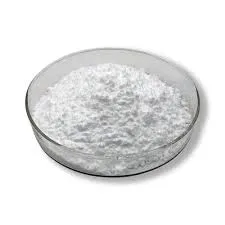
Desemba . 03, 2024 23:18 Back to list
Hydroxyethyl Cellulose Production Techniques and Methodologies for Optimal Quality and Efficiency
The Manufacturing Process of Hydroxyethyl Cellulose
Hydroxyethyl cellulose (HEC) is a non-ionic soluble polymer derived from cellulose, widely used in various industries for its thickening, binding, and film-forming properties. It finds applications in pharmaceuticals, cosmetics, construction, and food products. Understanding the manufacturing process of HEC is essential for optimizing production and ensuring the quality of the final product.
Raw Materials
The primary raw material for HEC production is cellulose, which is usually derived from wood pulp or cotton. The cellulose must be of high purity to minimize impurities that could affect the properties of the final product. In addition to cellulose, ethylene oxide is used as a key reagent in the etherification process, where ethylene oxide reacts with cellulose to form hydroxyethyl groups. The purity and quality of these raw materials are critical for yielding high-quality HEC.
The Etherification Process
The manufacturing of hydroxyethyl cellulose involves several key steps preparation, etherification, and purification.
1. Preparation of Cellulose The cellulose is first processed to enhance its reactivity. This typically involves drying and milling the cellulose to achieve a fine powder. This increases the surface area, facilitating more effective etherification.
2. Etherification The prepared cellulose is then subjected to etherification, the core reaction in HEC production. In this step, cellulose powder is mixed with anhydrous ethylene oxide in the presence of a suitable catalyst, such as sodium hydroxide or another alkali. This reaction typically occurs in a closed reactor under controlled temperature and pressure conditions. Depending on the desired degree of substitution (DS) to achieve specific physical properties, the reaction time and temperature are carefully monitored. The degree of substitution plays a crucial role in determining the viscosity and solubility of the final product.
During this process, ethylene oxide penetrates the cellulose chains, creating hydroxyethyl groups
. This transformation results in cellulose becoming more hydrophilic, improving its solubility in water and enabling it to develop thickening properties.hydroxyethyl cellulose manufacturing process

Purification and Drying
After etherification, the reaction mixture contains various by-products and unreacted materials. To purify HEC, the mixture undergoes several washing and filtration steps with water and organic solvents. The goal is to remove residual ethylene oxide and any unreacted cellulose or salts resulting from the process.
Following purification, the HEC solution is concentrated, typically through evaporation or membrane filtration. Once concentrated, it often undergoes a drying process, where the final product is obtained in a powdered form. The drying methods may include spray drying, freeze-drying, or air drying, depending on the desired characteristics of the final product. Proper drying is crucial to ensure a stable, free-flowing powder that can be easily transported and stored.
Quality Control
In the manufacturing process of hydroxyethyl cellulose, quality control is vital at every stage. The final product must meet specific criteria, including solubility, viscosity, and microbial contamination levels. Various analytical techniques, including viscometry, spectroscopy, and chromatography, are employed to ensure that the HEC produced meets industry standards and specifications.
Applications
The versatility of hydroxyethyl cellulose makes it applicable in numerous fields. In the pharmaceutical industry, it serves as a thickening agent for creams and ointments, while in construction, it is used to enhance the workability of cement-based materials. In cosmetics, HEC offers excellent emulsifying properties, helping to stabilize formulations. Furthermore, its use in the food industry, particularly as a thickener and stabilizer, underscores its importance across diverse sectors.
Conclusion
The manufacturing process of hydroxyethyl cellulose combines chemistry and engineering to transform cellulose into a versatile polymer. By carefully controlling each step from raw material preparation to purification, manufacturers can produce high-quality HEC that meets the diverse needs of various industries. As research and technology advance, the processes for synthesizing HEC will likely continue to evolve, leading to new applications and improved performance.
-
Versatile Hpmc Uses in Different Industries
NewsJun.19,2025
-
Redispersible Powder's Role in Enhancing Durability of Construction Products
NewsJun.19,2025
-
Hydroxyethyl Cellulose Applications Driving Green Industrial Processes
NewsJun.19,2025
-
Exploring Different Redispersible Polymer Powder
NewsJun.19,2025
-
Choosing the Right Mortar Bonding Agent
NewsJun.19,2025
-
Applications and Significance of China Hpmc in Modern Industries
NewsJun.19,2025







